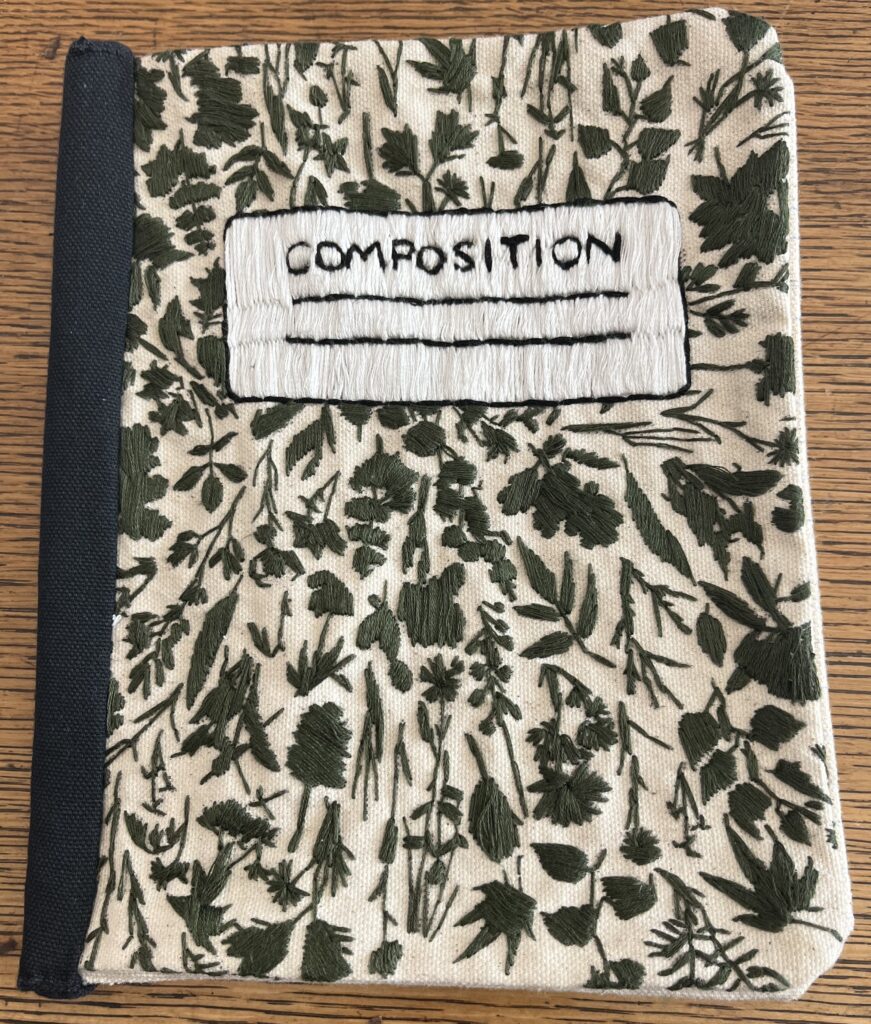
The book that I chose to adopt for the Pet Book Project is Common Threads Vol. 60 by Candance Hicks, which was published in 2015. During my time with this book at special collections, I felt as though I was holding an art installation, which is fitting because Candace describes herself as a “book artist” rather than an author. Through some additional research, I discovered that this book is a part of an ongoing series. If you visit Candace Hicks’ website, you can see other amazing works similar to this one, all beautifully hand-embroidered with unique designs and colors. I’m super excited and grateful to have the opportunity to study this one-of-a-kind book so closely, as some of her works have been sold for upwards of $1,500!
I was initially drawn to Common Threads because it immediately challenged my perception of what a book is. The cover, pages, and spine are all made from canvas cloth bound together by thread. There are 8 unnumbered pages, composed of 8 pieces of cloth that have been stitched together back-to-back so that the underside of the embroidery isn’t visible. Each part of the book is bound together by thread that matches the color of the canvas to create a more seamless look for the viewer. For example, the black spine is bound by black thread, and the cream colored pages are bound by cream or white thread.
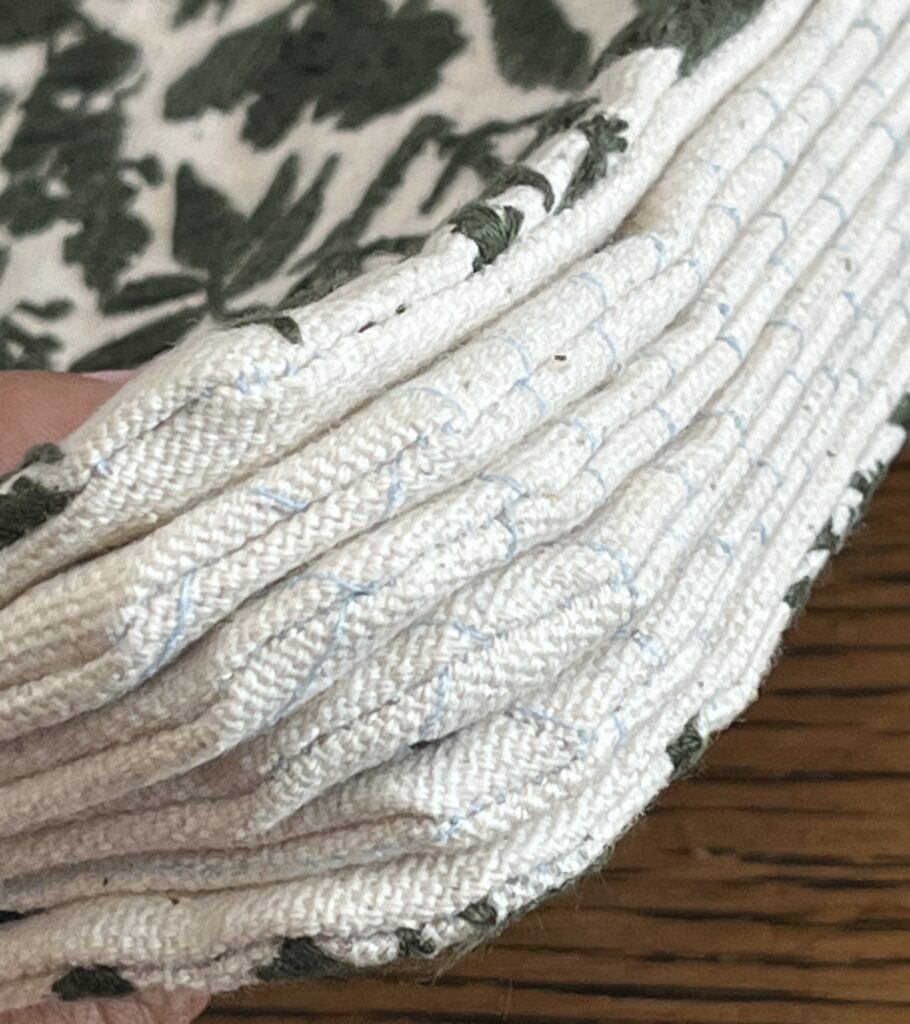

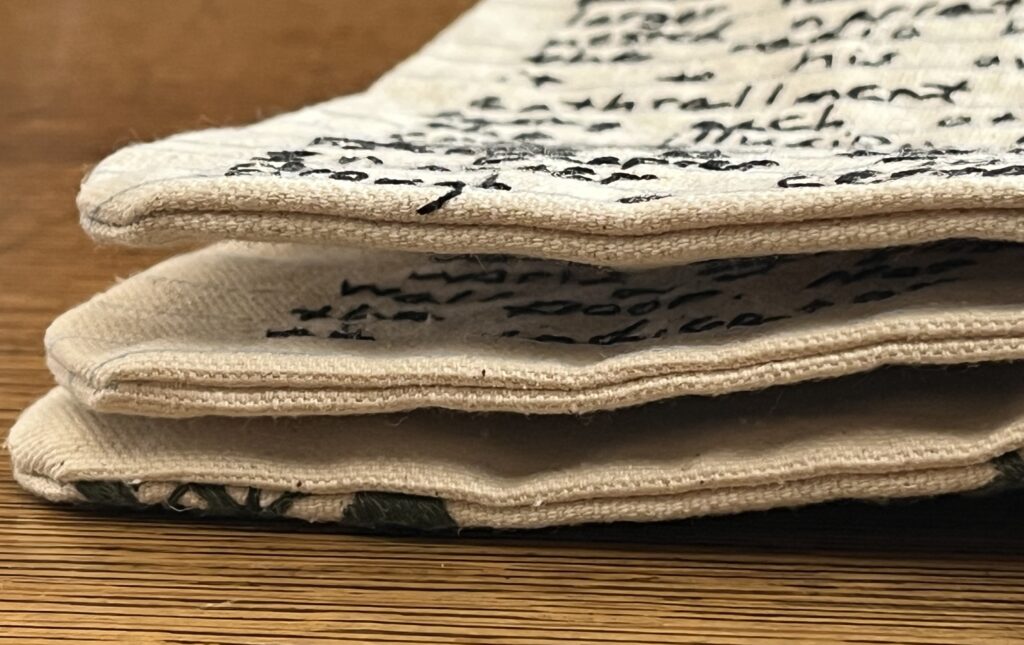
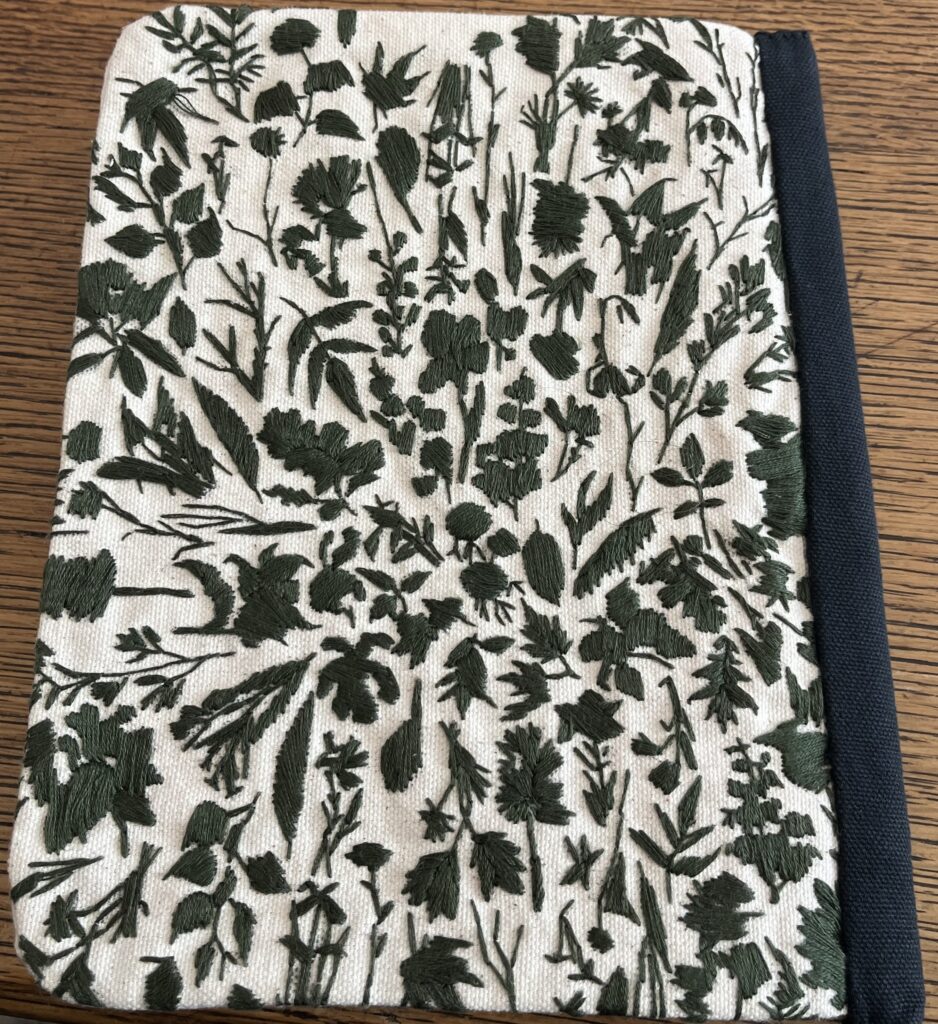
The same technique was used for the upper and lower covers, which are both decorated with army-green embroidered leaves, flowers, and other foliage-like images. The upper cover is also embroidered with a white and black rectangle that reads “composition” followed by two blank lines to mimic the traditional composition notebook cover that one may find in a classroom or in the isles of an office supply store. It’s hard to say how the “pages” were cut, since they aren’t made of paper, but I’m assuming some sort of fabric shears were used in the process.
The thread was extremely soft to the touch. It was satisfying to run my fingers along the covers and feel the patches of smooth embroidery in between the coarseness of the canvas. The book itself smelled of stale fabric, like a piece of cloth that had been sitting in the back of a closet for a while, not quite dirty, but untouched by laundry detergent or other fragrances that one would associate with clothes that had been worn or handled by someone.
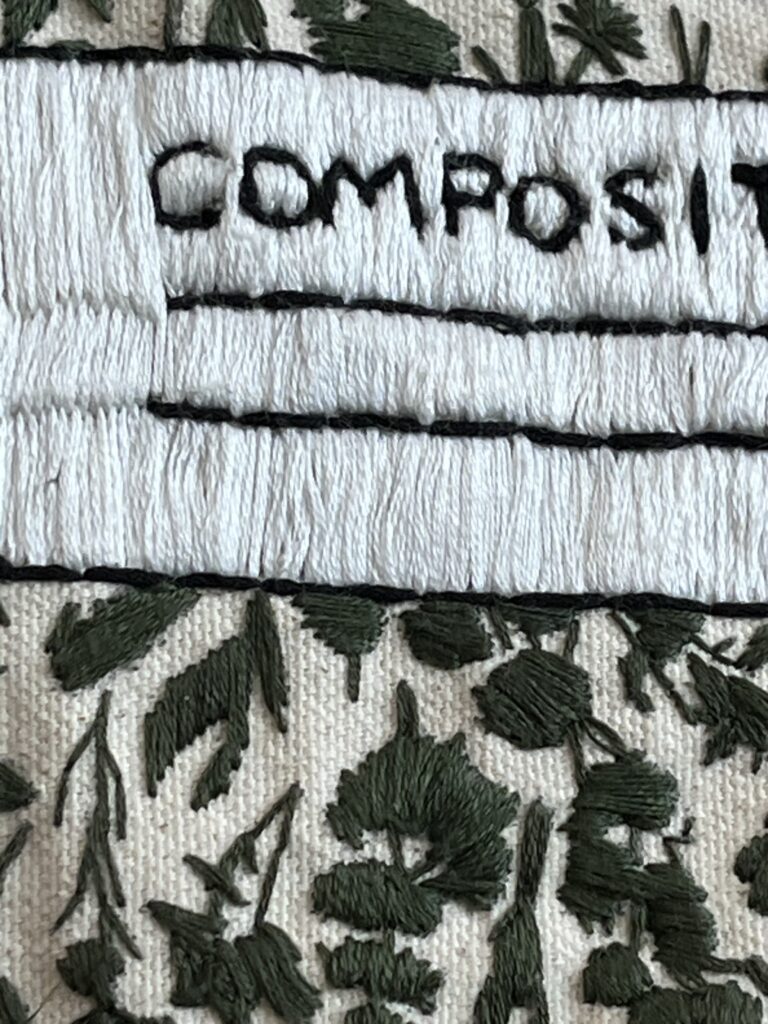
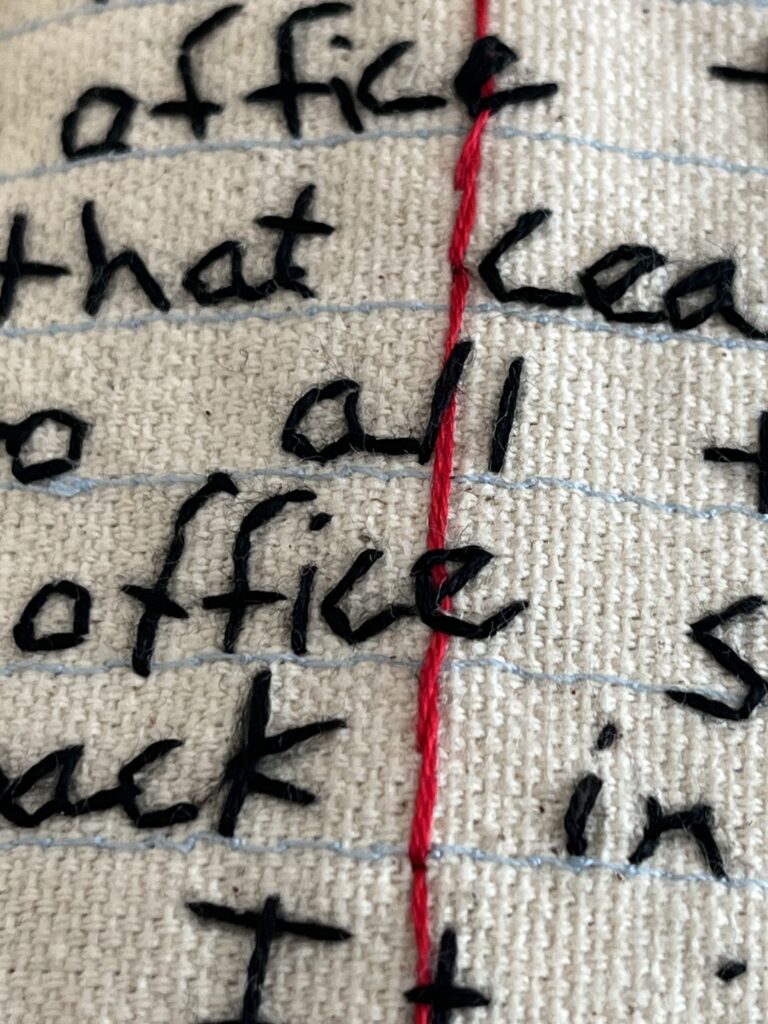
The red and blue lines of the composition notebook are also embroidered using the straight stitch pattern, and you can see exactly where one stitch ends and the next begins. If you look closely you can see that most of the lines are not perfectly straight, and they don’t quite line up with the lines on the neighboring pages. There are even some loose threads. Additionally, the red lines of the “paper” overlap the blue lines, and the black embroidered letters overlap the red lines, which clue us into the order in which the artist incorporated each color of thread on the canvas.
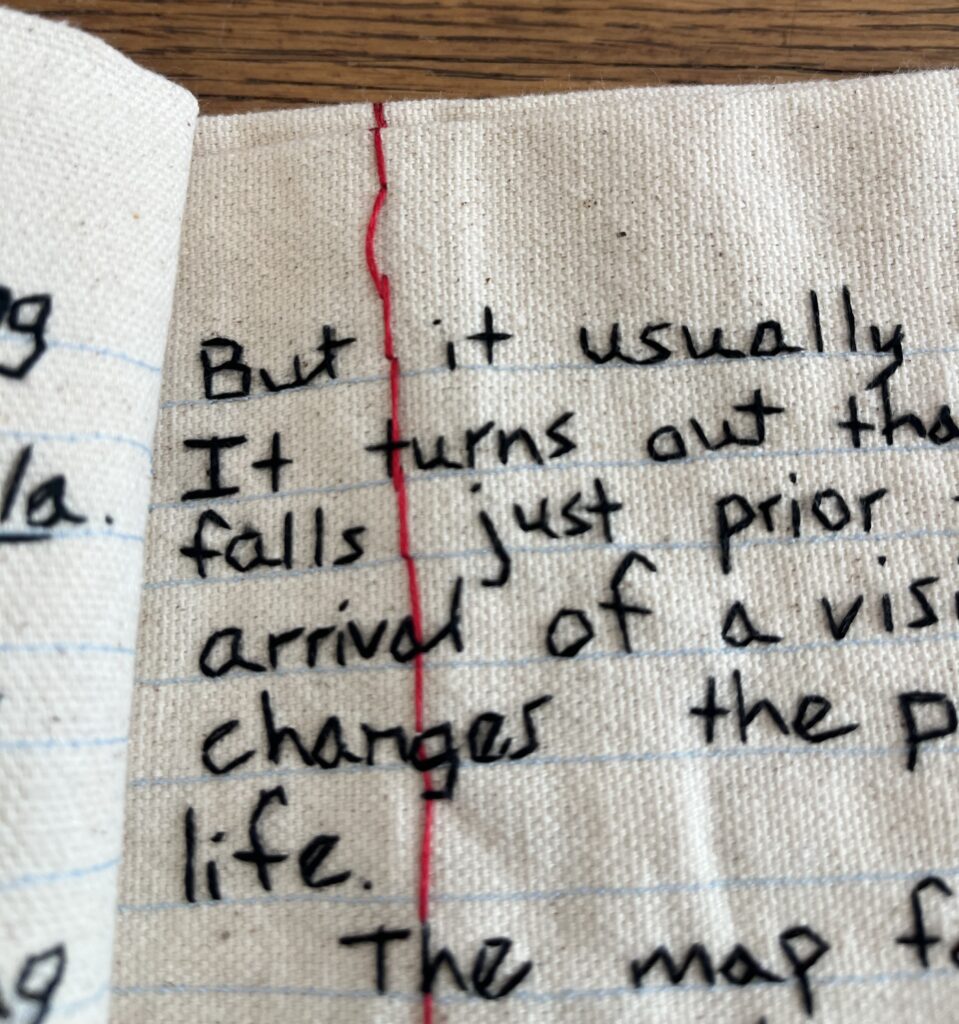
When you examine the book at eye-level, the embroidery makes the text look as though it is jumping off the page! If anyone else has tried to embroider a piece of cloth before, you’ll know that you have to be extremely intentional with every stitch. As I flipped through each canvas page, I could see just how much time and energy went into crafting this amazing work of art.
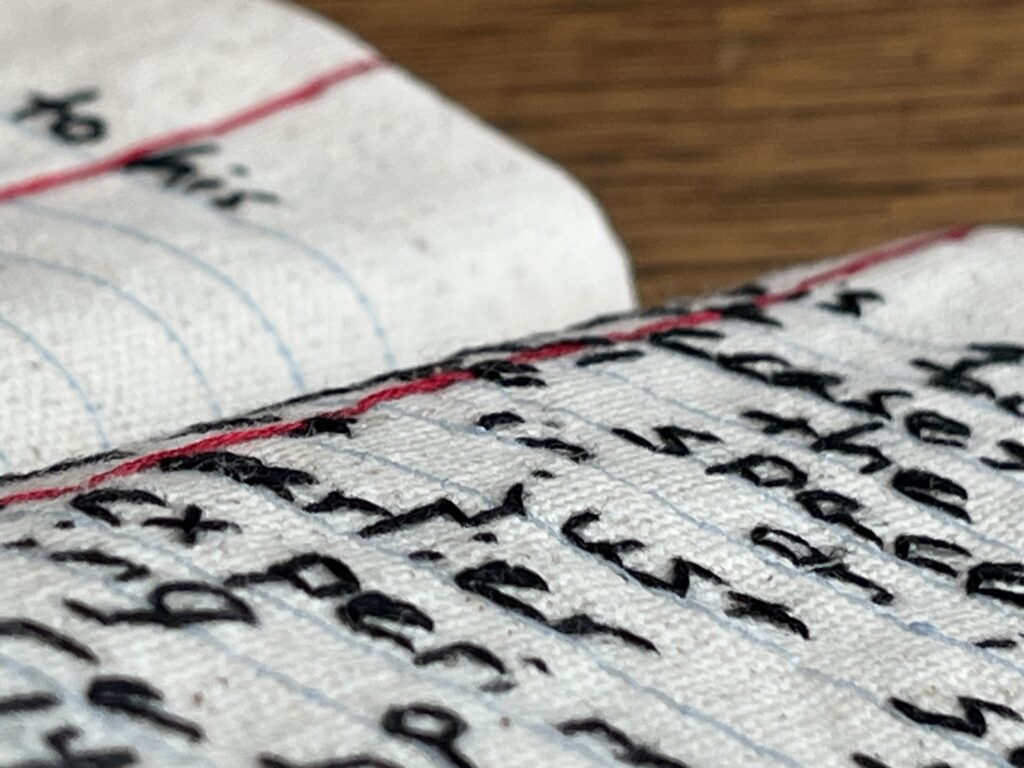

As someone who has tried (and failed) at embroidery art a few times, I am amazed and deeply impressed by her artistry and creativity. I was intrigued by Hicks’ ability to make the embroidery resemble handwritten notes, with words running off the page as if the writer was running out of room while quickly documenting their thoughts on the page.
Prior to adopting this book, I’m not sure I would have characterized a composition notebook as a book, especially one made entirely from canvas and thread. We briefly discussed in class what the definition of a book is, and I think this book pushes the boundaries of the definitions we posed. Common Threads brought me back to our conversation about the Law Code of Hammurabi and the question “can a stone be a text?” As I carefully handled my newly adopted pet book, I found myself asking “ can an embroidered canvas be a text?” I mean, it had all of the foundational qualities of a book. It’s a physical object with legible words that convey information to be understood by others, and one can argue that it also remediates an earlier medium (the traditional composition notebook).
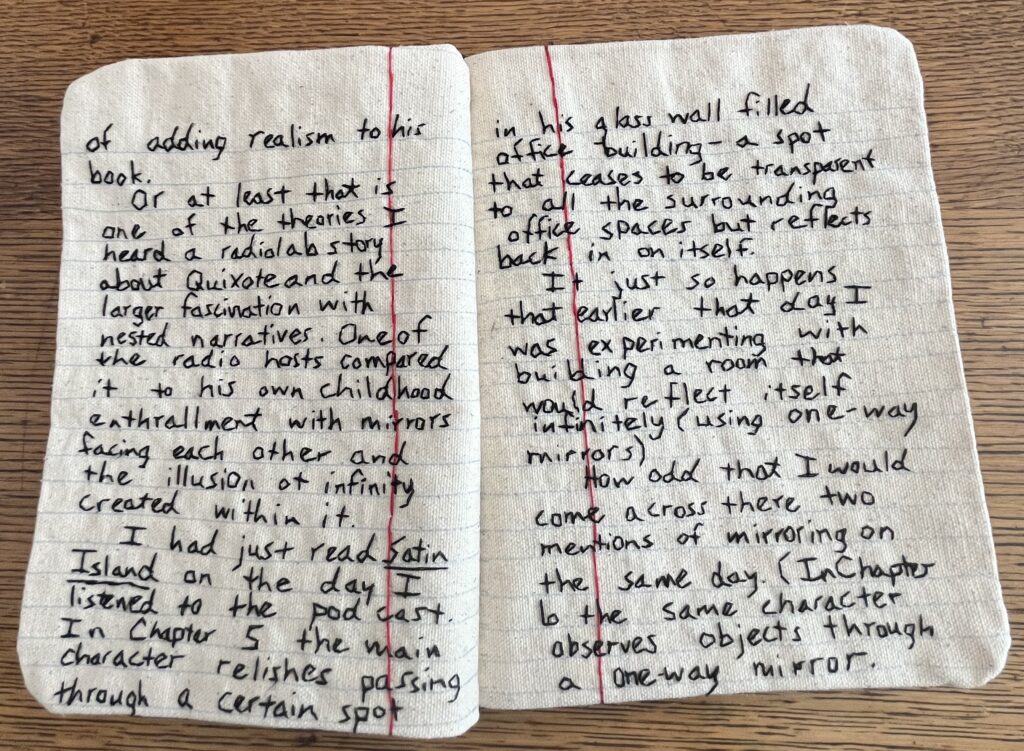
Physical Description: 8 unnumbered pages ; 23 cm
Signature Statement: To be completely honest, I could not figure out how to create the signature statement for this book. I’m guessing this is due to the fact that it’s made out of cloth and is not a print book.
Material Description: Cream, cloth canvas sewn together with white or cream thread and embroidered with black, green, red, white, and blue thread. The spine is black cloth canvas sewn together with black thread. 24.1 cm l x 17.8 cm w x 5 cm d
